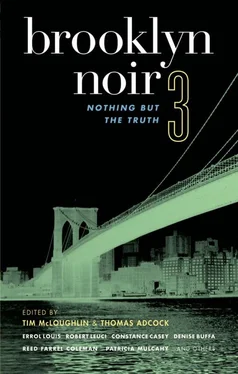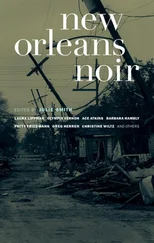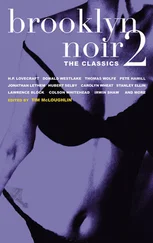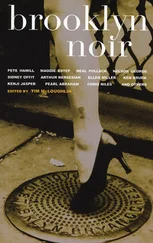On April 24, 2003, Pearson and Hendrix abducted a pretty, petite twenty-one-year-old college student named Romona Moore off the street in Brooklyn’s East Flatbush neighborhood. She was walking along Kings Highway, a well-traveled road, around 7 o’clock that evening.
It’s not clear exactly how Pearson and Hendrix got Romona off the street and into the basement of 5807 Snyder Avenue. The most likely scenario is that they simply attacked and dragged her into their lair — a move that might have been risky, given how many cars travel along Kings Highway and its side streets, but not impossible.
It’s likely, too, that the monsters employed a wicked charm in luring Romona to the vicinity of the small house where they attacked her. Both men, it turned out, were good at sweet-talking young women. They had a knack for appearing normal and friendly just long enough to put their prey at ease — before erupting in savage violence.
Pearson was twenty-one, Hendrix was nineteen. They knew nothing about the young woman they would butcher, although she lived only a few blocks from Hendrix.
Romona, the only child of Elle Carmichael, arrived in Brooklyn at age four when her mother moved from Guyana, part of a tide of Caribbean newcomers who turned East Flatbush into a bustling black neighborhood full of ambitious entrepreneurs and hard-working civil servants.
The deal was simple, and understood from the slums of Kingston to the hills of Trinidad: You could trade status in the Caribbean for opportunity in the States. It was common to find men and women who had been engineers, administrators, or bankers in the Caribbean working as maids, cooks, janitors, and cab drivers in Brooklyn, often with the prickly impatience of people eager to regain their stations in life.
They bought homes, started families, joined churches, and saved their pennies. Some kept two passports, and thereby dual citizenship, sending their children to stay with relatives in Jamaica, Trinidad, Haiti, Barbados, Grenada, or Guyana every summer — all with an eye toward a triumphant retirement someday back on their sun-drenched islands. What began as a small Caribbean colony in Brooklyn at the turn of the twentieth century grew by leaps and bounds over the decades; by the 1980s, East Flatbush was an island community with its own robust civic associations, political clubs, restaurants, and grocery stores.
The proud islanders who built the community never let the West Indian lilt leave their voices. But many grew to love their new home, and either sank roots in Brooklyn or joined New York’s age-old, working-class pilgrimage to the suburbs.
Romona was part of this immigrant journey, growing up with five cousins in the heart of Caribbean Brooklyn. She was dark-skinned with a bright, warm smile. One of her professors at Hunter College called Romona “very proper and very formal” in class. “She was the type of student who you would feel wouldn’t answer your questions but suddenly would come with a very smart response,” he said.
In her third year at Hunter, Romona didn’t have a special boyfriend, although she did have plenty of friends, along with a 2.8 grade point average. She was studying psychology and preparing to vault her family forward with a career in medicine. Romona was going places.
All that came to a halt on April 24, when Romona went to visit a male friend in the neighborhood and trade some music CDs. From there, she planned to walk to a Burger King on the corner of Church and Remsen Avenues, about a block from her home.
She never made it.
After grabbing her off the street, Pearson and Hendrix held Romona prisoner in the filthy basement apartment for at least three days. They stripped and bound her, putting a heavy chain around her neck and connecting it to her hands behind her back. Then they took turns beating, raping, and sodomizing her between bouts of swilling booze and smoking marijuana.
The basement was a house of horrors. Police found rubber monster masks hanging in the apartment, along with pinup photos of women in chains.
In that same room, Pearson and Hendrix burned the young woman with cigarettes — three circles just under her eye in a triangle meant to look like a dog’s paw, a sign of the Bloods gang the monsters claimed to belong to.
Pearson and Hendrix weren’t hard-core gang-bangers: In fact, Brooklyn is a world away from cities like Los Angeles and Chicago, where highly organized sets hold and defend turf. More likely, the pair were playing at being tough guys, knowing just enough gang lore to think burning Romona’s face might be a cool thing to do.
Later, at trial, the burns didn’t get much attention; the focus was on other brutalities inflicted by Pearson and Hendrix. They mutilated Romona while she was alive, hacking at her hands and feet with a saw.
“Classic sociopaths,” is how Brooklyn District Attorney Charles J. Hynes would describe the pair.
At least one person saw Romona’s agony unfolding.
Ramondo Jack, a childhood pal of Hendrix’s, had moved from Brooklyn, but was in town visiting his uncle and other relatives in the old neighborhood when he ran into Pearson and Hendrix. The pair brought him into the basement, poured a few drinks, and displayed their handiwork. They showed off Romona like a trophy, pulling back a sheet to display the innocent woman they had defiled and brutalized and chained like a dog.
“He lifted up the covers and I saw this female laying there,” Jack later told a reporter. “She had a bruise on one of her hands and one of her feet. She had bandages on one of her hands and one of her feet. And she was bleeding from the middle of her face. And one of her eyes was swollen. I couldn’t believe what I was seeing.”
“Say hi, bitch!” Pearson ordered Romona, according to Jack.
“Her voice was low — teary. One of ’em tried to saw one of her hands and her foot,” Jack later told a jury. “They both had smirks on their faces, like no cares.”
Romona Moore, three days into her ordeal, bloodied and beaten, quietly begged Jack to help her. The psychology major even kept her composure enough to try and play on Jack’s sympathy.
“You seem nicer,” she told the last outsider to see her alive.
Romona was wrong: Jack was not nicer. A nice person — hell, a normal, compassionate person — would have walked out of the makeshift torture chamber and immediately called the cops. Not Ramondo Jack. He’d moved out of the tough Brooklyn neighborhood years ago and started a family in Maryland. But he clung to the idiotic, immoral code of the street and its first commandment, Thou Shalt Not Snitch .
“I left,” he would later tell the jury. “I went home. I wasn’t happy about it. I was bothered.”
Just not bothered enough to tell anybody who could help.
And so Ramondo Jack put the incident out of his mind and went shopping, he told cops.
He will go through life knowing he lacked the spine to make an anonymous 911 call that might have saved a desperate girl’s life. Jack’s refusal to act reflects a shocking moral collapse in inner-city neighborhoods from coast to coast, in which witnesses to vicious, inexcusable crimes keep their mouths shut and refuse to notify police or cooperate in any way.
For a few witnesses, silence is borne of the legitimate fear of being harmed by drug dealers or other urban predators. But for many others, like the cowardly Ramondo Jack, silence is immoral apathy — a desire to appear cool and tough like the neighborhood gangsters, but in reality a weak-minded refusal to take responsibility for stemming the violence and chaos that have claimed countless lives and even entire neighborhoods.
The syndrome was on display in Baltimore in 2004, where drug dealers brazenly sold an underground video titled Stop Snitchin’ . The video featured dealers flashing guns and openly threatening to kill anyone who might dare to testify against them. Startled cops used the video to round up and prosecute the dealers, but not before Stop Snitchin’ and a companion T-shirt became runaway hits in inner-city neighborhoods from coast to coast, including Brooklyn.
Читать дальше












